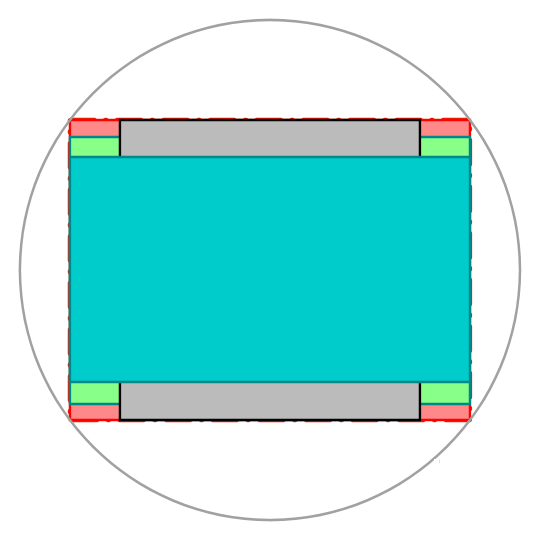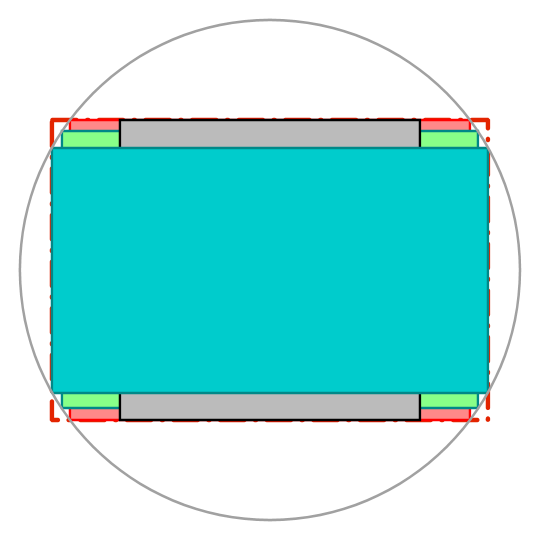
with articles on technical aspects of photography.
|
Time for Omni-Aspect Sensors? A few notes |

|
Back to the photo/tech section, with articles on technical aspects of photography. |
|
Trying too avoid confusion (but, possibly, adding to it), we will be talking about multi-aspect or omni-aspect imagers or cameras. Both kinds allow you to change the aspect ratio between one recorded image and another, except that in multi-aspect you cannot switch between landscape and portrait orientation without rotating the camera by 90° around the lens axis. Actually, avoiding that rotation while shooting in a vertical format is the main subject of this article. Most digital cameras use two traditional form factors from the film era, single-lens reflex (SLR) and rangefinder (RF). In both, most of the rationale behind the body shape is long gone. For example, the designer no longer has to accommodate the film path (including film chambers on both sides of the lens). Except for digital SLRs (a dying breed) there is no need for a viewfinder hump directly above the lens and a mirror chamber with an optical viewing screen. The traditional form-factor has been tested and refined over more than 100 years of development. It seems to work quite well ergonomically, at least in the landscape orientation. For vertical framing, however, it is not so good, both in terms of camera handling and accessing its controls. The so-called 'vertical grips", whether integral or accessory, don't seem to help much, if at all. Good news: with the mirror going the way of the dodo, another option becomes feasible: using an omni-aspect imager without rotating the camera. You can see it in my E-M1X article (update of February, 2019), referred to as "true multi-aspect". While I have yet to see it described elsewhere, the concept is so obvious that it must have been presented somewhere — and not just once. This one comes in two flavors, described in their own sections that follow the next one. Multi-aspect imagers These are quite common and, with one exception I'm aware of, they are implemented in the simplest possible way: by cropping down the full sensor frame (sometimes referred to as native). In Micro Four Thirds this is the full-resolution, 4:3 rectangle, usually cropped down to 3:2 and 9:16, often also 1:1. This does not really matter, as the same result can be produced in postprocessing; some image managers (like the freeware FastStone, which I can really vouch for) have a quick, lossless crop function for common file types, including JPEGs (which usually suffer some quality loss when re-saved). The only advantage seems to be that the preview is more accurate and meaningful, using the actual aspect ratio as set (you can later change your mind, as long as the camera also saves raw files). Let me refer to this design as Cropped Multi-Aspect; its geometry is shown at the left below. It i clearly seen that of all frames shown, only the native 4:3 one spreads over the full image circle: frame diagonal equals circle diameter (21.7 mm).
The other picture shows a less common solution by Panasonic, used in (some of) their Lumix DC-GH camera series. I'll be calling it Full Multi-Aspect. It adds just 1.6 mm to the overall width of the sensor. This does not affect the 4:3 frame (limited by the image circle, which cannot be changed), but adds to the area to the cropped wide frames (2:3, 9:16) — see the Area row of the table that follows.
|
| 
| 
| ||
| | Cropped Multi-Aspect | Full Multi-Aspect | ||||||||||
|---|---|---|---|---|---|---|---|---|---|---|---|---|
| Aspect Ratio | 1:1 | 4:3 | 3:2 | 16:9 | Sensor | 1:1 | 4:3 | 3:2 | 16:9 | Sensor | ||
| Frame [mm] | 13.0×13.0 | 17.3×13.0 | 17.3×11.6 | 17.3×9.8 | 17.3×13.0 | 13.0×13.0 | 17.3×13.0 | 18.0×12.0 | 18.9×10.6 | 18.9×13.0 | ||
| Area [mm²] | 169 75% | 225 100% | 200 89% | 169 75% | 225 100% | 169 75% | 225 100% | 217 96% | 201 89% | 246 109% | ||
| Diagonal [mm] | 18.4 85% | 21.7 100% | 20.8 96% | 19.9 92% | 21.7 100% | 18.4 85% | 21.7 100% | 26.7 123% | ||||
| Focal Length | 118% | 100% | 104% | 109% | 100% | 118% | 100% | 81% | ||||

|
Back to the photo/tech section, with articles on technical aspects of photography. |
| Home: wrotniak.net | Search this site | Change font size |
| Posted 2019/09/01; last updated 2019/09/03 | Copyright © 2019 by J. Andrzej Wrotniak. |